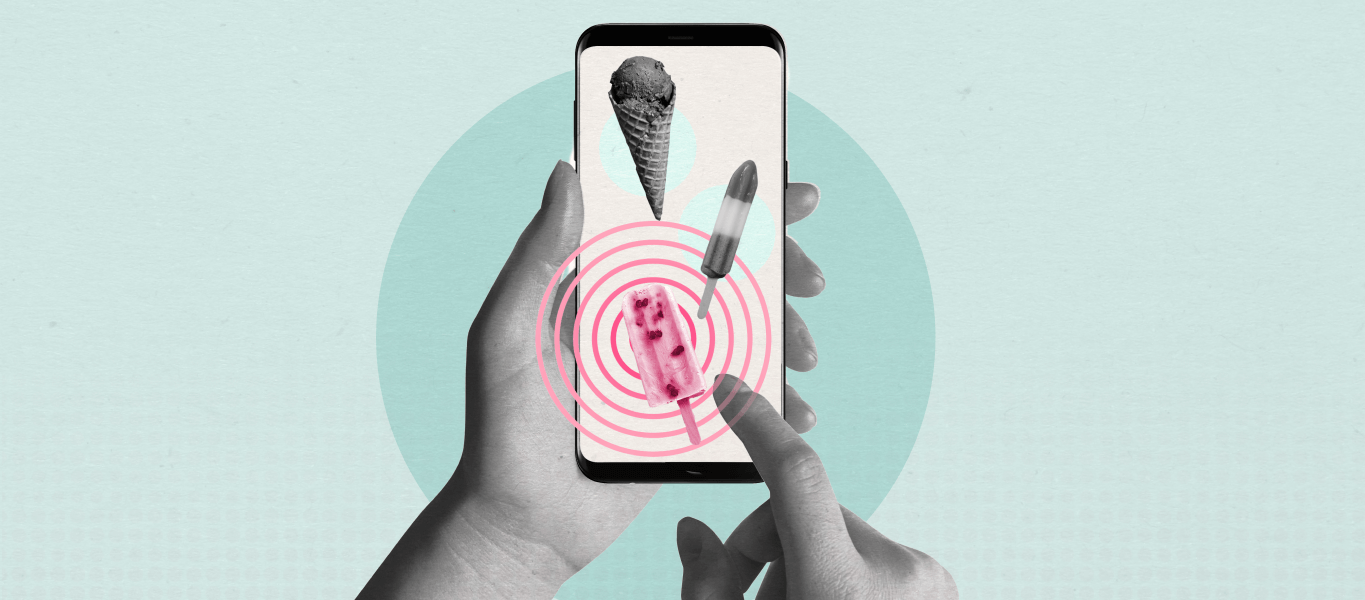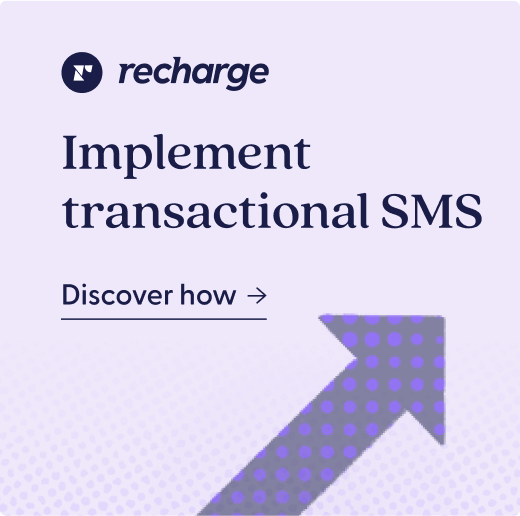Subscriptions offer a higher level of customer engagement than one-time purchases. For the majority of one-time product based businesses it takes significant effort, strategizing and investment to get a customer to continually come back and make new purchases. While getting a customer on a subscription eliminates many of the initial hurdles involved with bringing customers back to your store, there are a few key ways to optimize existing subscribers to stay longer (or forever).
Optimizing subscriptions with Recharge is easier than ever with several new features, apps, integrations, and strategies that can directly influence customer engagement. Whether it be a questionnaire on the front page, exclusive discounts and free gifts, or allowing your customers to engage with their subscription via text message, this all contributes to involving your customers in the relationship which decreases churn and increases lifetime value.
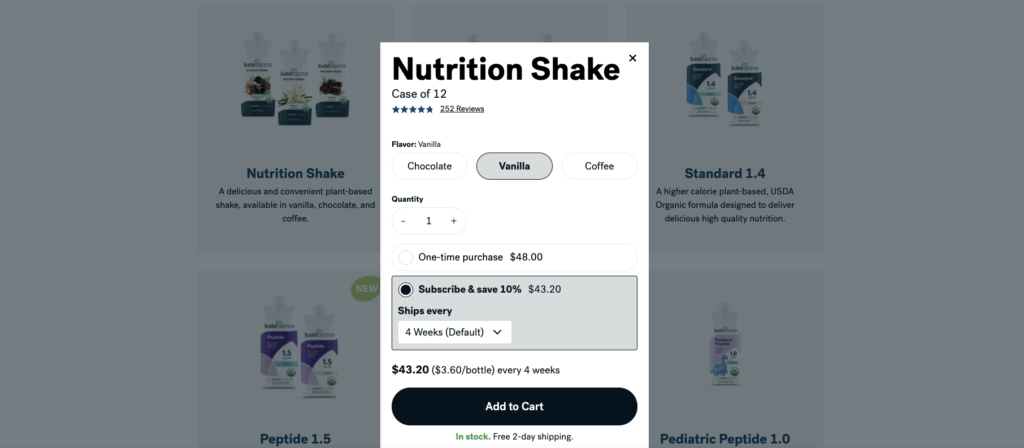
Engagement through notification channels
One thing that is unique to subscriptions is how much order management is required after the initial purchase. RechargeSMS is one great way to eliminate stress for both you and the customer by letting subscribers interact with their subscription via text message. Simple actions like swapping products, skipping deliveries, or changing quantity can be such a hassle that some customers just opt to cancel their subscription. Thankfully, simplifying subscription engagement with transactional SMS can directly reduce churn and increase LTV. We’ve even seen increases on average order value thanks to the one-time product add-ons. RechargeSMS is absolutely free, and an obvious addition to any store looking to increase customer engagement and positively affect important metrics.

In addition to SMS, customized email notifications with calls to action can have the same effect. Klaviyo Flows in conjunction with Recharge Quick Actions can give the customer a lot of the same controls that are offered in RechargeSMS. Take a look at our integration guides for more info: Recharge x Klaviyo Quick Actions
A positive, engaging purchase flow
We have all visited online stores that feel like a chore to navigate through. When it comes to optimizing a subscription business model, it begins the same as it would with any form of commerce. And that is reducing friction. Your business should carry the customer to the end of the checkout where they’re happy about their experience and the products that are in their cart with as few barriers as possible.
One of the ways that many subscription merchants are eliminating friction is by using a quick questionnaire to bring the customer directly to the products that suit them. A questionnaire or quiz-flow is not only a great way to assign a product to a customer, it’s also fantastic for prompting the customer to invest in the purchase, well before clicking “place order”. Now, of course this sounds like additional redundant steps on part of the customer, but a better way to look at it is that it’s time they would have spent aimlessly browsing and trying to discern the product that fits them. This way you control the path to the checkout along with matching a customer with unique items, and creating a sense of investment on both sides.
Some great Recharge merchants utilizing questionnaires are:

Gemmist uses a hair quiz with 18 short multiple choice questions to generate a custom set of products for their customers. In doing so, they take into account customers’ hair texture, how they style it, and even their location to measure humidity and sun exposure. At the end of the questionnaire, they offer up additional products that customers can add-on to their customized bundle, such as brushes and stylers. This experience helps the customer feel that the products suggested are curated just for them and their needs, and also ensures that Gemmist is providing products that will work for their customers’ unique hair.
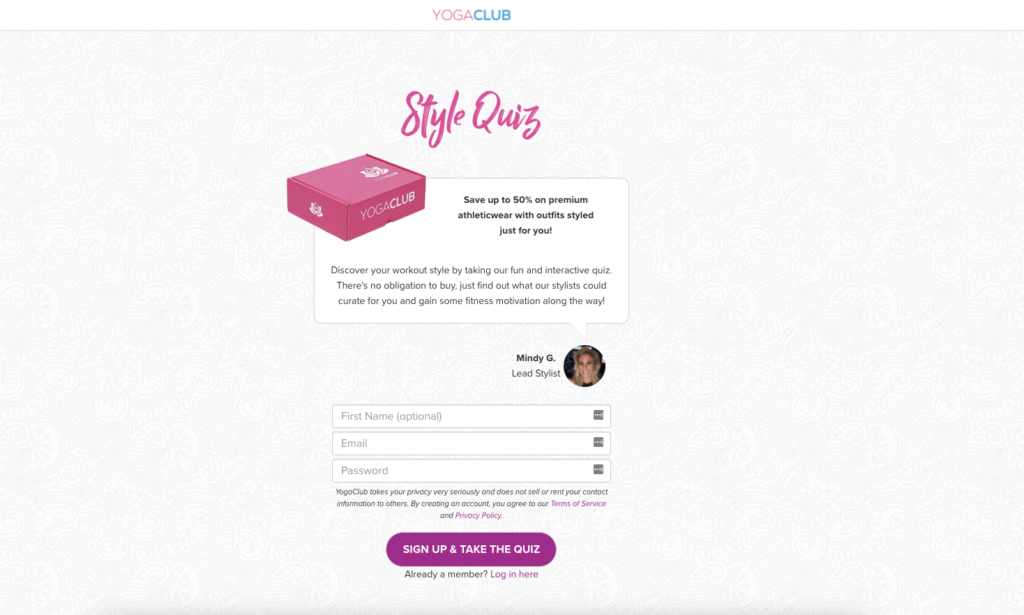
Yoga Club begins with questions that help customers get a sense of how frequently their clothes will be worn and in what capacity— from athleisure activities like brunching or running errands, to regimented workout routines. By establishing what price point customers are familiar with, they also create a sense of comfort that the end-suggestions won’t be completely out of the realm of what they can afford. They finally move the quiz into preferences, such as what parts of the body customers are comfortable with showing versus those they want to downplay or keep covered. Though this questionnaire is fairly lengthy, it establishes trust early on, and remains engaging throughout the process. The end result is a curated outfit that customers can further customize prior to checkout.
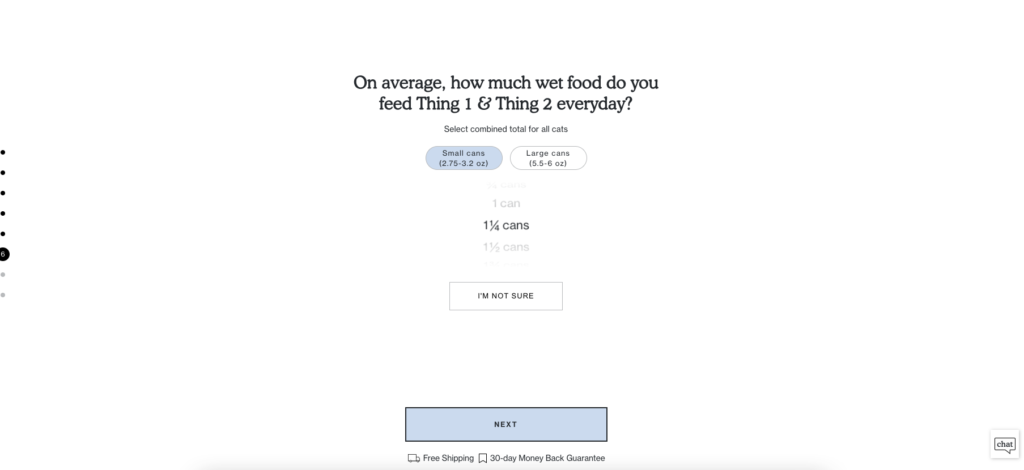
Cat Person injects a little humor into their questionnaire, by offering little pop-up notes when certain answers are selected. They ask the pet’s name(s) early on, and for the remainder of the questionnaire, they keep the questions personalized by using them. Their questions also keep customer’s pets preferences in mind, asking what flavors they tend to like more and if they have any allergies. The end result is a showcase of the first-box meal, followed by the regular meal plan deliveries that can be customized prior to checkout. This tactic is unique in that it not only accounts for the first box customers will receive, but also sets them up with the knowledge and empowerment to set up their regularly scheduled delivery.
A healthy mix of subscription and one-time purchase options
The majority of DTC brands who are offering subscriptions also order a one-time purchase option for their customers. The combination of these two tactics creates a customizable and flexible experience for customers. Perhaps a customer doesn’t want to commit to a subscription before trying a product. Offering a one-time purchase and then following up with options and incentives to subscribe is a great way to convert them from a single transaction to a recurring opportunity.
